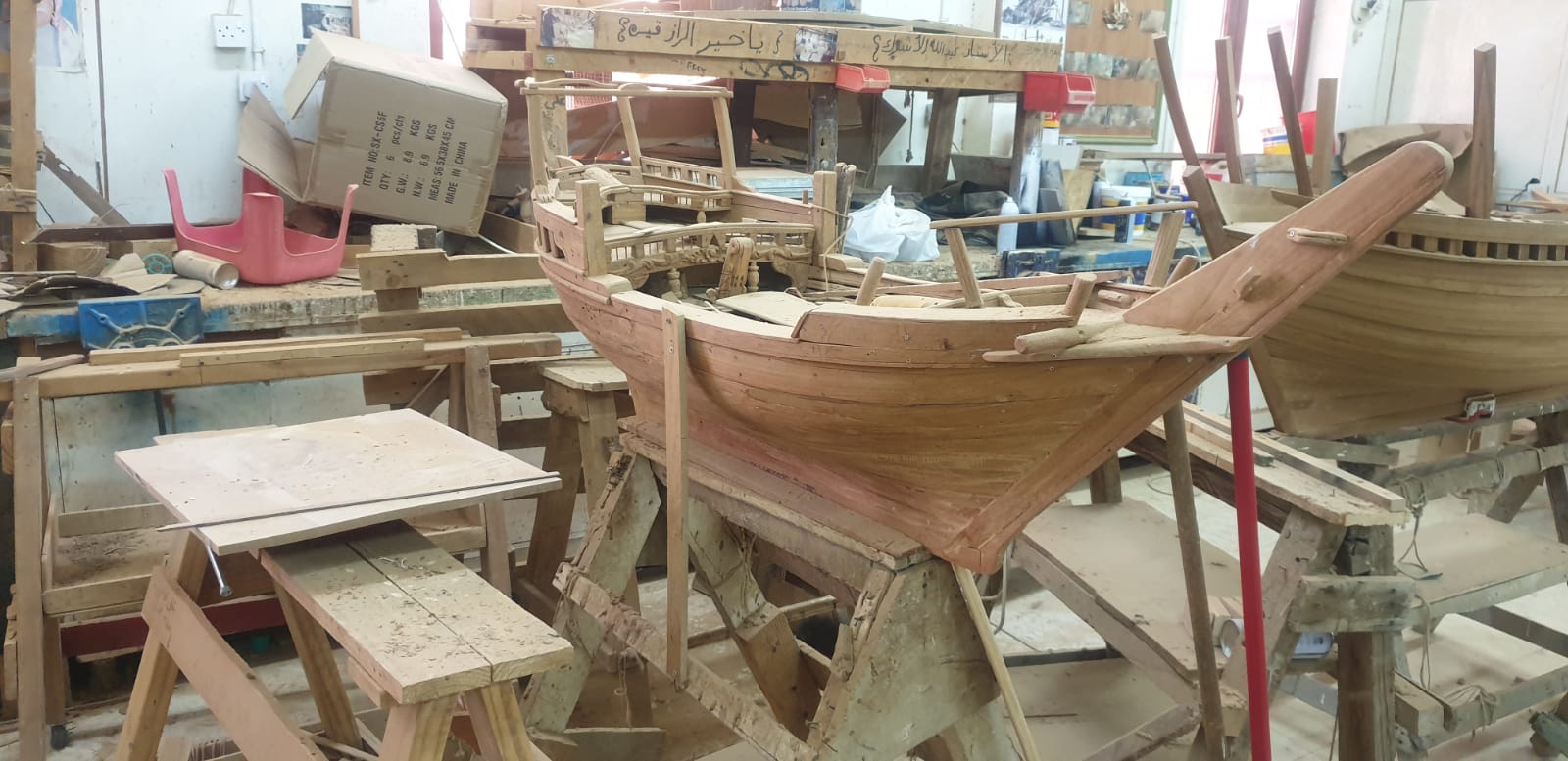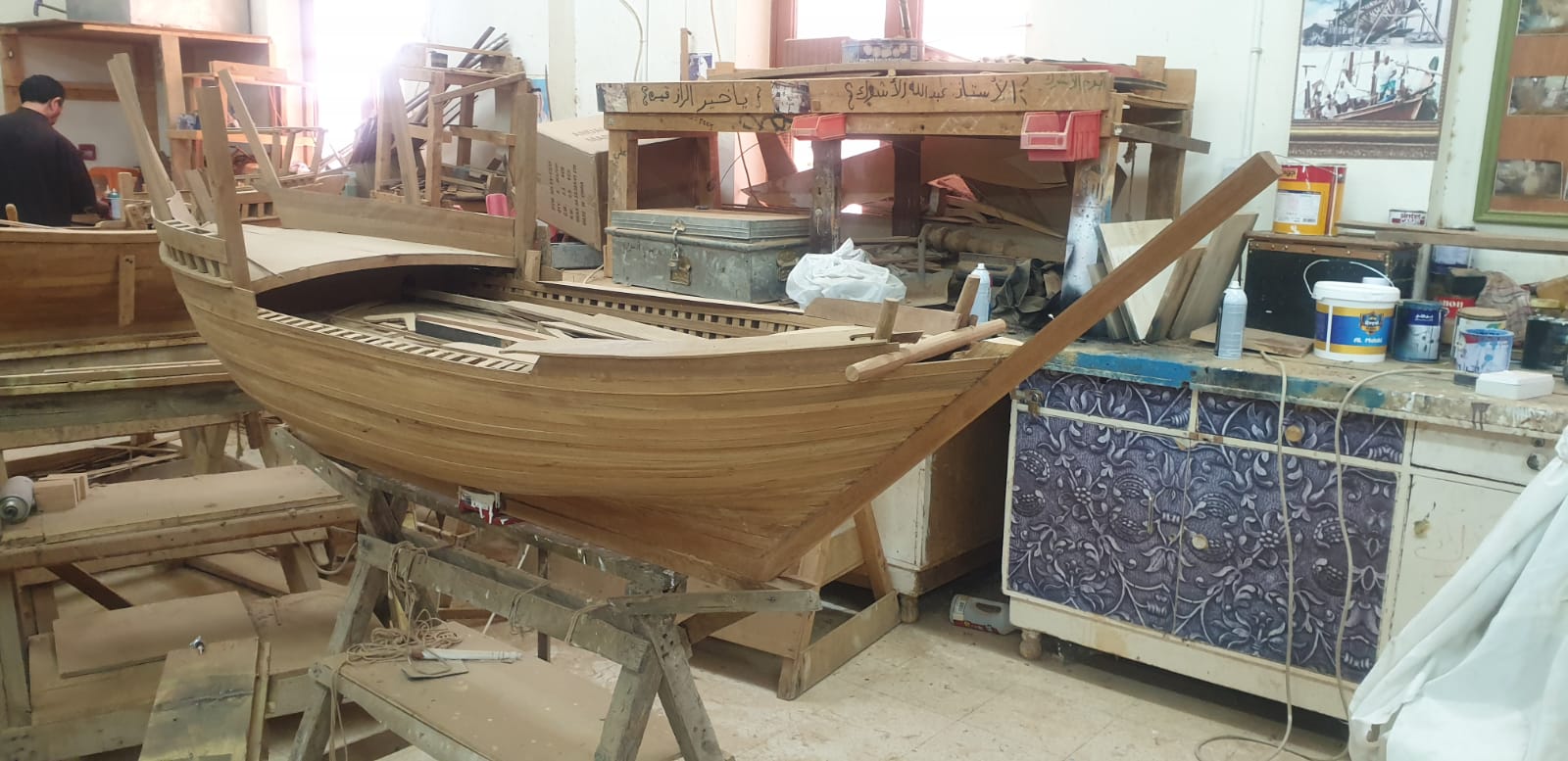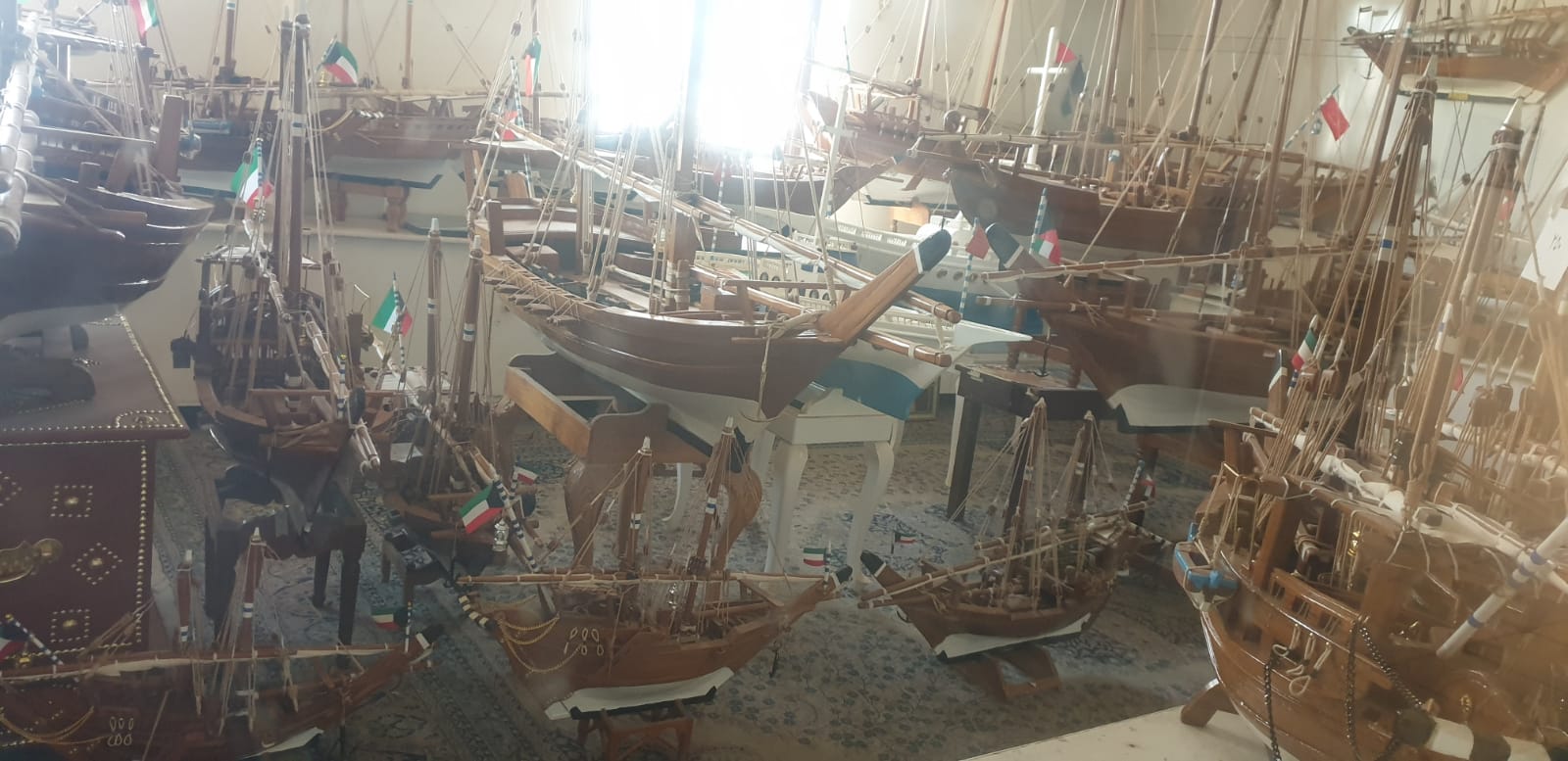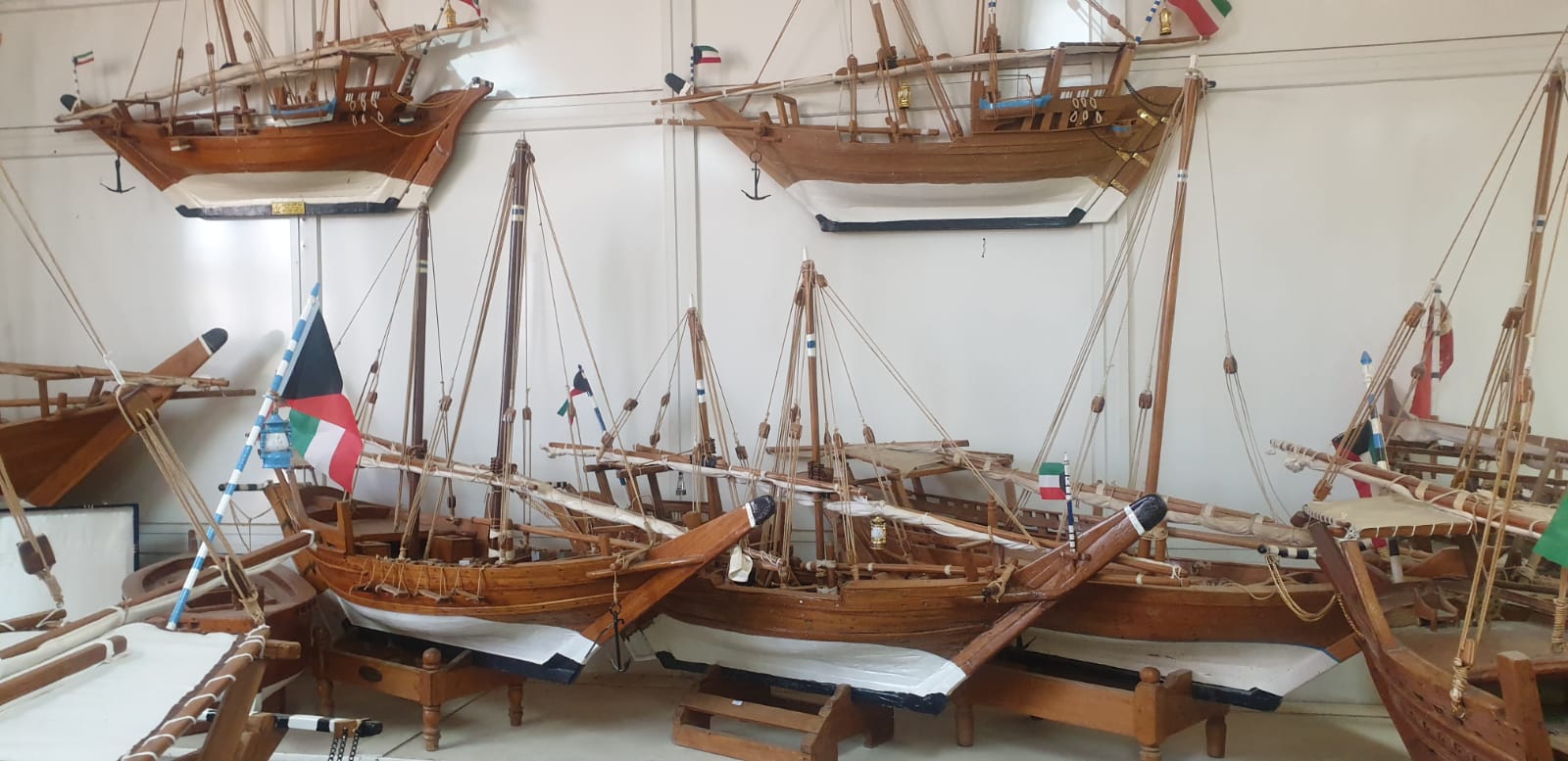By Ben Garcia
To preserve the national heritage and legacy of dhows in Kuwait, a group of Kuwaiti artisans makes miniature dhows for government bodies and as gifts for individuals and companies. The objective is to preserve and impart the legacy of dhows for generations to come. These artisans are striving to share and impart their skills as they approach the twilight of their lives.
"Many of us are elderly. We have volunteered to be part of this national heritage preservation to leave an indelible legacy that lasts. We organize workshops for youth, but because of the pandemic, this has stopped. But we are ready to again welcome anyone who wants to learn to build dhows soon," said 60-year-old Sadique Al-Qallaf, a volunteer worker at Diwaniya Al-Qallaleef in Sharq near the fish market. The diwaniya has around 350 members.
"This is a very important part of Kuwait's history, so we don't want it to be forgotten by our young people. In order to preserve our national heritage, we have to contribute something. We do this while we are still capable of working," he told Kuwait Times. Qallaf said this work helps the artisans to reconnect and bond with longtime friends. "Most people making model dhows are elderly, but there are some youngsters who have an interest in preserving this heritage. Instead of just sitting at home doing nothing, this work is reuniting us here. We come here almost daily and we are happy," he added.



"I just want to spend my remaining time on earth productively and help the government preserve the most precious part of our heritage - making dhows. Without this treasure, we were not able to reach the status of a nation state. I love Kuwait and my love for this country is eternal. Because of these dhows, many of us Kuwaitis survived and managed to achieve our ambitions and goals. Our forefathers sacrificed and protected us during a time when we had nothing but the sea and sand. Thank you dhows for bridging us with the past!" he exclaimed.
Along with the Kuwait Towers, the dhow is likely the most photographed icon in Kuwait. It is a symbol of Kuwaiti culture and heritage. Dhows come in various shapes and sizes and usages. The Soffar for example was the main source of transportation for people who wanted to travel outside Kuwait. Prior to World War I, according to Qallaf, Kuwait had around 800 boats, which increased to 1,200 vessels in the early 1900s.
"Ships at that time were as important as aircraft now. They were built according to international maritime standards and were a means of transportation for many to go from one place to another in the pre-oil era. This was how we were able to visit India and neighboring countries in the Arab world," Qallaf said.
"In 1917, the 'Muhammedi' was the biggest dhow (boom) built for Kuwaiti merchant Mohammed Marafi by Al-Estad Humoud bin Hassan. In 1937, Al-Mohallab dhow was made for Thunayan Al-Ghanim by Al-Estad Muhammad Al-Abdullah. It was almost the last ship left in Kuwait at the National Museum, which was burned down by Iraqi soldiers during the invasion," he added.
Al-Batil and Al-Ghawas were other types of dhows used for pearl diving, while Al-Baghlah and Boom Khattah were popular for transporting goods. "These kinds of dhows were made to stand tall against the strongest winds in the Arabian Gulf and roughest waves at sea. These types of dhows were the favorites of many because of their style and coolness," Qallaf told Kuwait Times. There were special dhows for fetching freshwater (Al-Ma'a) from neighboring countries as well.
Dhows were used for trading and fishing and have long defined Kuwait's identity since its early existence. The miniature dhows are normally ordered by ministries and schools to be used for display or as decor. The money collected from the sales of miniature dhows is the main source of funding for the diwaniya and the training workshops conducted by the group.
A miniature dhow takes at least a month to make, depending on its size. Most of the wooden materials used are sourced from wood stores in Shuwaikh. "The most important thing is the preservation of national heritage and sharing of expertise with the new generations," Qallaf concluded.











